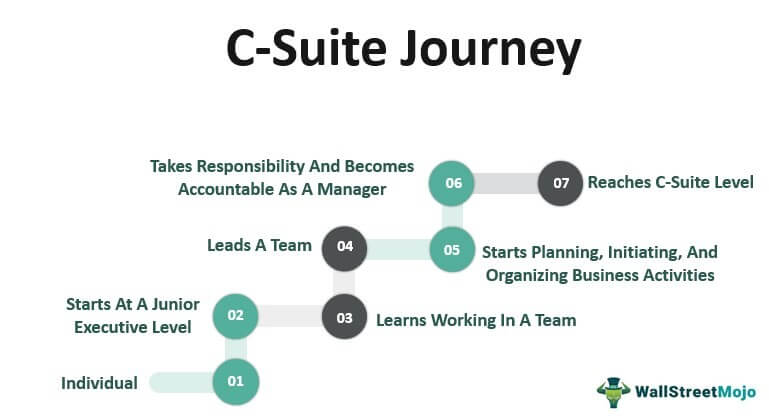are vp considered c suite

When it comes to corporate hierarchy, the C-suite is often associated with top-level executives who hold significant decision-making power. However, the position of a Vice President (VP) is sometimes misunderstood in relation to the C-suite. In this blog article, we will explore the question: Are VPs considered part of the C-suite? We will delve into the roles and responsibilities of VPs, their place in the organizational structure, and how they interact with C-suite executives.
To begin our exploration, it is important to understand the distinct roles and responsibilities of VPs within an organization. Vice Presidents are typically high-ranking executives who are responsible for managing a specific department or area of the company. They play a crucial role in executing the company's strategic goals and objectives, overseeing operations, and leading their respective teams. VPs often have a deep understanding of their domain and possess significant expertise and experience in their field.
1. Understanding the C-Suite
In this section, we will define the concept of the C-suite, outlining the typical executive positions that fall within it. We will explore the roles of the Chief Executive Officer (CEO), Chief Financial Officer (CFO), Chief Operating Officer (COO), and more.
Summary: This section provides an overview of the C-suite, highlighting the key positions and their responsibilities.
2. The Role of Vice Presidents
Here, we will delve into the specific responsibilities of VPs and how they contribute to the overall functioning of an organization. We will discuss their involvement in strategic decision-making, team management, and their impact on company performance.
Summary: This section focuses on the unique responsibilities and contributions of VPs within an organization.
3. VP vs C-Suite: Clarifying the Distinction
This section aims to clarify the distinction between VPs and C-suite executives. We will discuss the differences in their roles, decision-making authority, and level of influence within the organization. By addressing common misconceptions, we aim to provide a clear understanding of where VPs stand in the corporate hierarchy.
Summary: Here, we highlight the differences between VPs and C-suite executives to dispel any confusion surrounding their positions.
4. The Reporting Structure: VPs and the C-suite
In this section, we will discuss the reporting structure within an organization and how VPs interact with the C-suite. We will explore how VPs provide valuable insights and recommendations to C-suite executives, fostering collaboration and driving organizational success.
Summary: This section focuses on the relationship between VPs and the C-suite, emphasizing their collaborative nature and the value they bring to top-level decision-making.
5. Challenges Faced by VPs in the Corporate Hierarchy
Here, we will address the unique challenges that VPs often encounter in their roles. From balancing operational duties with strategic thinking to managing teams and navigating organizational politics, we will explore the obstacles VPs face and provide insights on overcoming them.
Summary: This section highlights the challenges faced by VPs and offers practical solutions to overcome them.
6. Career Progression: From VP to C-suite
In this section, we will discuss the potential career paths for VPs who aspire to reach the C-suite. We will explore the skills, experiences, and qualities that can help VPs ascend to top executive positions, providing guidance for their professional growth and advancement.
Summary: Here, we outline the steps VPs can take to progress in their careers and eventually reach the coveted C-suite.
7. Industry Perspectives: VPs and the C-suite
This section will provide insights from industry experts and leaders on the role of VPs in relation to the C-suite. We will gather perspectives and experiences from diverse industries to provide a well-rounded understanding of the topic.
Summary: By incorporating industry perspectives, this section offers a broader view of the relationship between VPs and the C-suite.
8. The Importance of Collaboration between VPs and the C-suite
Here, we will emphasize the significance of effective collaboration between VPs and C-suite executives. We will explore how strong partnerships and open communication between these two levels of leadership can drive success and foster a cohesive organizational culture.
Summary: This section underscores the importance of collaboration for organizational success, focusing on the relationship between VPs and the C-suite.
9. The Evolving Role of VPs in Modern Organizations
In this section, we will discuss how the role of VPs has evolved in response to changing business landscapes. We will explore the increasing strategic importance of VPs and their expanded responsibilities in navigating complex challenges and driving innovation.
Summary: Here, we explore the changing role of VPs and their growing influence in modern organizations.
10. Conclusion: The Intersection of VPs and the C-Suite
In conclusion, we have examined the role of VPs within an organization and clarified their position in relation to the C-suite. VPs play a vital role in executing strategies, managing teams, and contributing to overall company success. While they may not be considered part of the traditional C-suite, their collaboration with C-suite executives is crucial for effective decision-making and achieving organizational goals.
Summary: The final section summarizes the key points discussed throughout the article, emphasizing the importance of collaboration between VPs and the C-suite.




